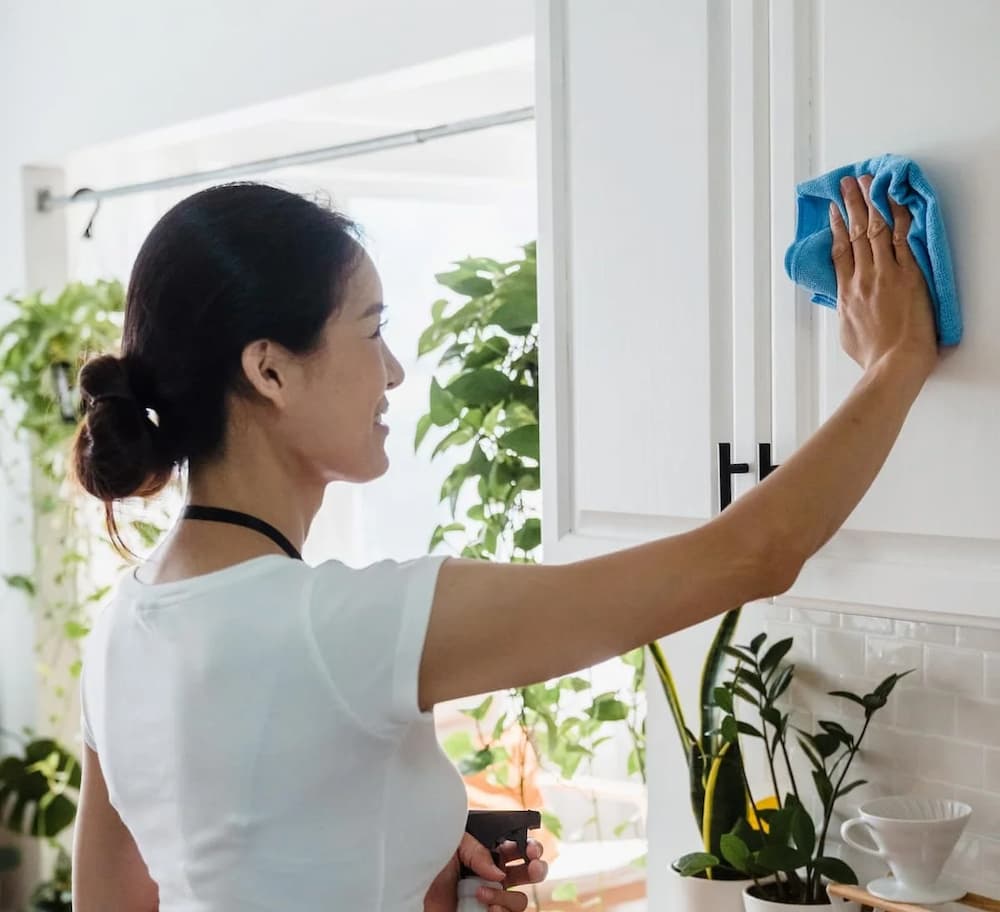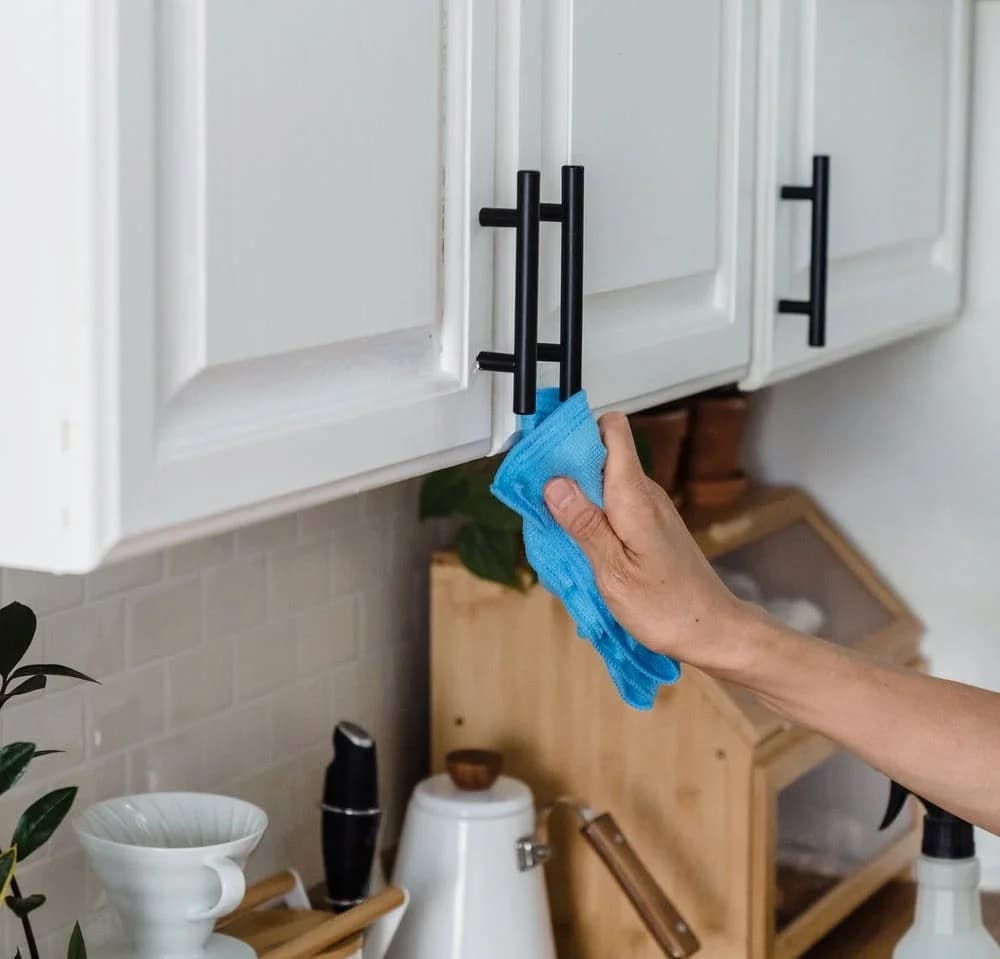A deep kitchen cleaning may be one of the most lucubratory housework because it is a high-traffic area and prone to getting dirty. Plus, the chances of dealing with stubborn stains are higher in the kitchen area.
Cabinet cleaning is probably the most time-consuming while cleaning the kitchen because it requires great attention and deep cleaning. However, we all want to keep our cabinets clean and maintained to prolong their life and elegance. Therefore, regular cabinet cleaning and care are required to ensure they last long in their perfect form. We have prepared a guideline for you to have all the kitchen cabinet cleaning and care information.
4 Steps to Follow While Cleaning Your Cabinets
It is good to follow a checklist while cleaning your kitchen cabinets. You may conform to the below steps to get the perfect results from cabinet cleaning.
- Set a Cleaning Schedule
Since cabinet cleaning needs attention to detail, it takes time. It would be better to start your cleaning in the morning to spare enough time for detailed cleaning. You may consider adding this cleaning task to your calendar, which will remind you that there is a crucial job waiting for you even if you want to escape from it. In this way, you will also be able to benefit from the daylight during the cleaning.
Kitchen cabinets are usually exposed to dirt, heat, and moisture. These factors can cause them to become old quickly. To keep them clean and protected, you should clean them regularly. Consider differentiating daily and monthly cabinet cleaning. Wipeout spills and splatters immediately and do the dusting in your daily cabinet cleaning. Although you clean your cabinets daily, you should commit to a monthly or seasonal schedule for more detailed cleaning. Follow the next steps for deep cabinet cleaning.
- Choose Appropriate Cloths and Cleaners
Microfiber cloths are gentle and lint-free, and this makes them appropriate for cabinetry cleaning. But, you may also use an old t-shirt as your cleaning cloth but make sure that it is clean. Be certain that it is a lint-free cotton cloth to ensure a gentle cleaning and prevent residue on cabinets. You may also use a soft toothbrush to clean detailed or small areas. You should avoid using abrasive cleaning tools, such as scouring pads, steel wools, or bristle brushes that can damage the cabinets’ surface with scratches. Do not forget to clean and dry your cleaning cloths to prevent bacterial growth when you finish the cleaning.
You should prefer natural and gentle products for cabinet cleaning as much as possible. Hot water mixed with mild dish soap will work perfectly for most of the stains. Also, you may use a mix of vinegar and water to remove sticky stains. If you still need to use a commercial product, make sure that it is gentle and appropriate for the material of your cabinetry. Before using such cleaning products, test them in a small place to observe whether they harm the finish of the cabinets. You may need to use abrasive cleaners for your sink, but you should avoid using them for your cabinets. Products or ingredients like scouring powder, silicone-based cleaners, ammonia, bleach, nail polish remover, and petroleum-based products can damage or discolor the cabinet finish.
- Clean the Cabinets in Order
Instead of starting to clean from the place that catches your eye, put your cleaning in order. You will gain time if you start with upper cabinets. Otherwise, you will have to repeat dusting your already-cleaned lower cabinets. Since the top of the cabinets will probably be the dustiest space, dust the tops first with a handy vacuum cleaner. Then, you may pass to cleaning the fronts of the upper cabinets with the wet cloth.
You may not be planning to clean the inside cabinets every month, but at least you should clean them seasonally. Inside cabinet cleaning is also an excellent reason to consider whether there are things you should get rid of in your cabinets. Do not forget to wipe each surface with a dry cloth after you finish the cleaning.
Since you should be extra careful with glass doors, you may leave them to the end. First of all, make sure to have the appropriate glass cleaner that will not harm the cabinetry. While cleaning the glass doors, do not spray it directly on the glass doors. Instead, spread it on a lint-free and gentle cloth, and be sure that you use the cloth only on the glass not to ruin the cabinet finish.
- Dry the Cabinets after Cleaning
Once you complete the cleaning, do not let cabinets dry by themselves. Waiting to dry might ruin the cabinet colors and finishes. Instead, wipe the entire surface with a soft, lint-free cloth. You may also leave the cabinet doors open to air the inside for a while.

Things to avoid for care and maintenance
Besides regular cleaning, you should follow some rules to keep your cabinetry in perfect shape. Along with abrasive cleaners, some other things may shorten the life of the cabinets. Here is a list of the risks that you should be aware of:
- Moisture: Since moisture can cause permanent damage to your cabinet finish, you should keep cabinet surfaces dry. Do not hang wet cloths on your cabinets. Cabinets around the sinks and dishwashers will probably be more exposed to moisture, so you should be extra careful with keeping them dry. You may also consider airing the kitchen regularly in fine weather.
- High Temperature: Self-cleaning ovens generate intense heat that might damage the cabinetry. While running the self-cleaning cycle, ensure that you have protected your cabinets near the oven. You may consider removing the cabinet doors and drawers close to the oven before using the self-cleaning cycle.
- Light Exposure: Direct sunlight may darken the color of cabinets with natural wood finish. It is also harmful to any painted or laminated cabinets because it may cause decolorization. To minimize such risks, you may use window coverings or consider having your cabinetry away from the places exposed to direct sunlight.
- Waxing and Polishing: You should not use waxes or polishing sprays on your cabinetry. They can damage the cabinets by creating a sticky barrier over the surface. This hard-to-remove barrier can attract dust and make the cabinets’ surface look dirty.
Consider Having Easy-to-Clean Cabinetry
If you plan a renovation in your kitchen, consider buying easy-to-clean cabinets to gain more time. Since cabinet cleaning necessitates excellent attention to detail, you may save time if you prefer cabinets with a minimalistic style. Cabinet doors with many details and dimensions will collect more dust and dirt, which means deep cleaning will take much more time. Therefore, consider preferring cabinets with flat panels.
Although they are stylish, open shelves are not easy to maintain. Since they collect more dust and dirt, you will have to regularly clean shelves and everything on them. If you find such a cleaning routine overwhelming, consider limiting the number of open shelves and prefer cabinets and drawers instead. You may make the cabinet cleaning easier by avoiding open shelves as much as possible.
Moreover, cabinets with glass doors are not easy to maintain and clean. Before opting for cabinets with many glass doors, know that you will have to spare a significant amount of time to keep the glass clean. Instead, you may think about easy-to-maintain alternatives that do not show fingerprints or do not collect dust and dirt as cabinets with glass doors do.
Last but not least, if you want to spend less time with cabinet cleaning, you may prefer cabinets with flush ends. Since they are smooth and sleek, flush ends are easy to wipe down. You will certainly be able to speed up your cabinet cleaning with flush ends.
In this blog post, we have listed all the dos and don’ts that will help you keep your cabinets clean and maintained. Besides, we have shared other things to consider before renewing your cabinets, if you look for easy-to-clean options. You now have all the information to ease your regular cabinet cleaning and care.


